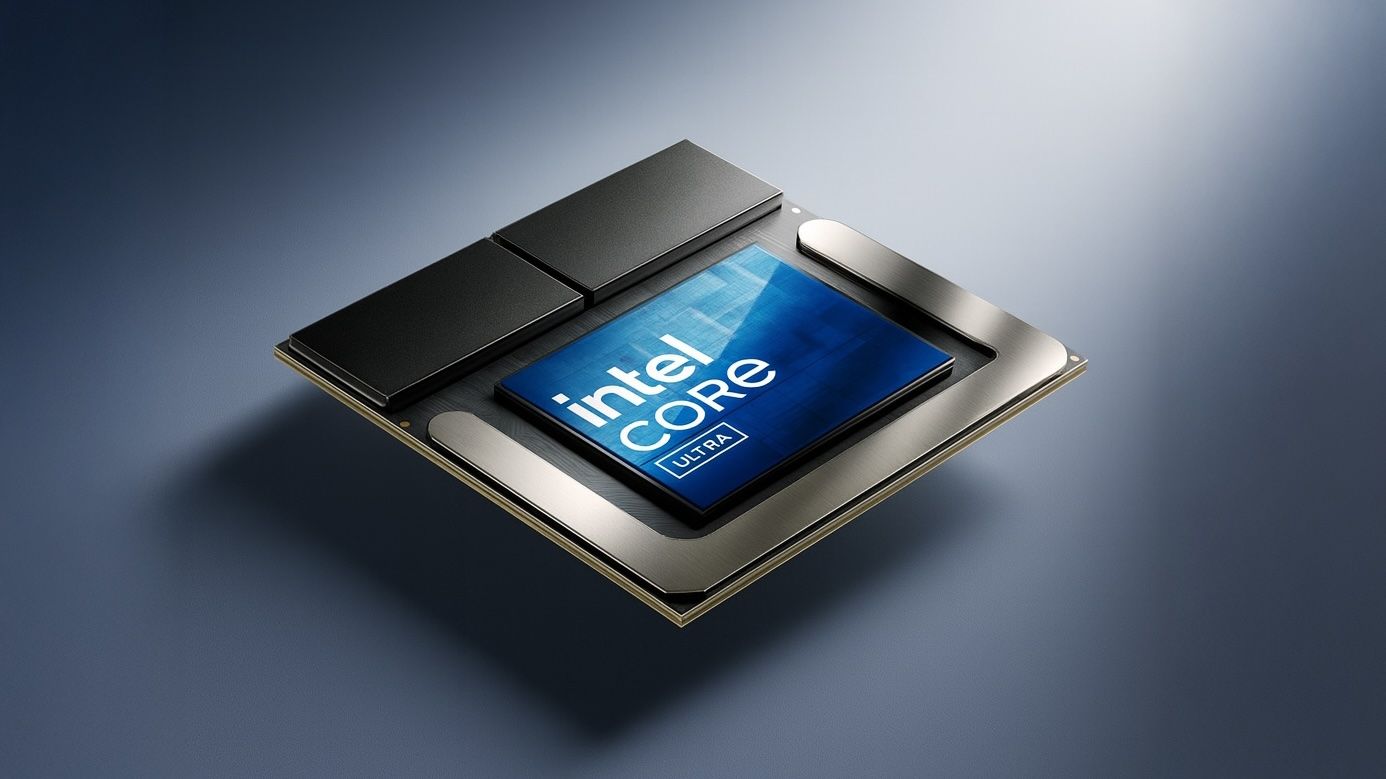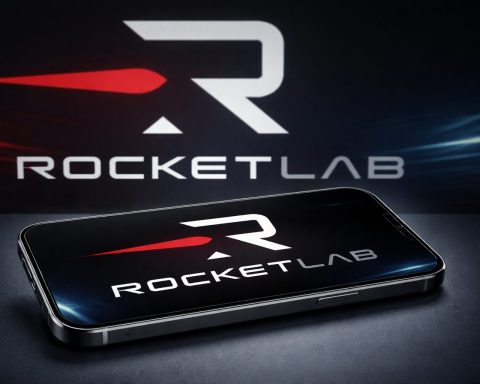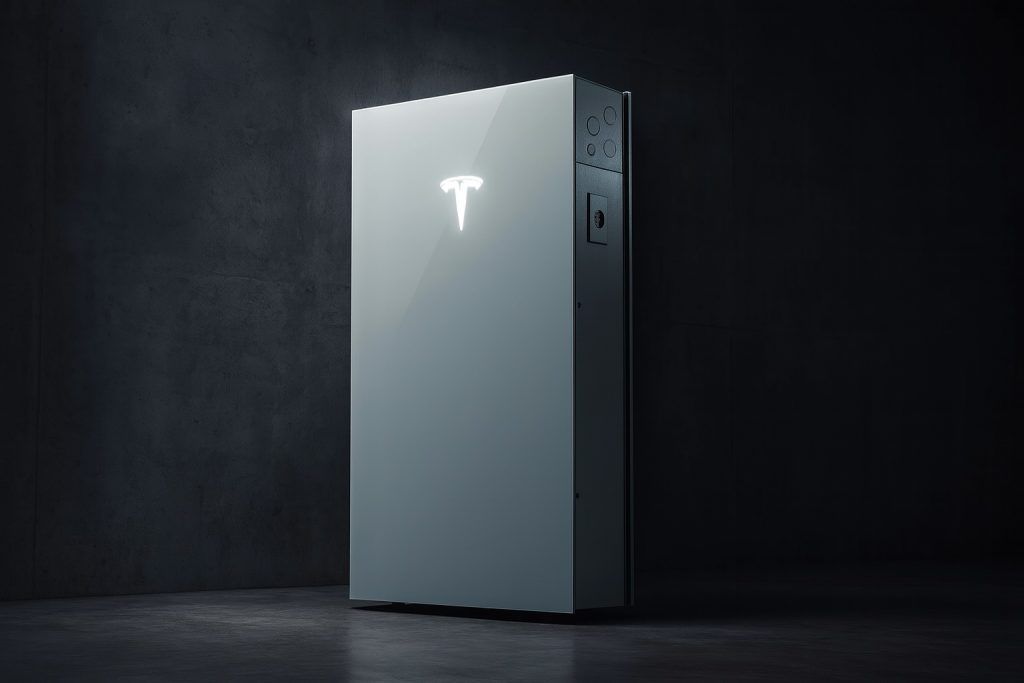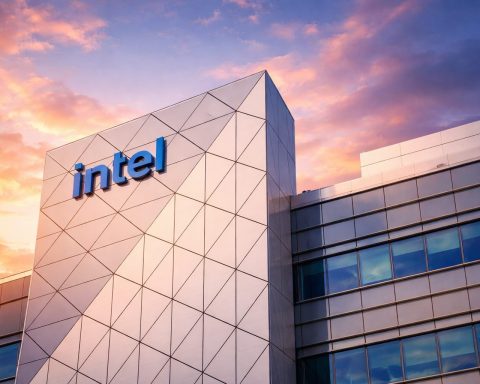- Intel Lunar Lake Core Ultra 200V uses a disaggregated 3 nm TSMC N3B compute tile with 4 Lion Cove P-cores and 4 Skymont E-cores (8 cores total), SMT disabled to save ~15% die area and boost perf/W by ~5%.
- Intel also boosts single-thread IPC by ~14% versus Redwood Cove and widens caches to 2.5 MB L2 per P-core, while Skymont E-cores gain ~68% IPC over Crestmont.
- AMD Ryzen AI 9 HX 370 “Strix Point” combines 12 CPU cores (4 Zen 5 and 8 Zen 5c) with base TDP 28 W up to 54 W and includes an on‑die XDNA 2 AI Engine rated up to 50 TOPS (INT8).
- Qualcomm Snapdragon X Elite packs 12 Armv8 “Oryon” cores on TSMC 4 nm with up to 3.8 GHz across all cores (4.2 GHz dual‑core boost) and 42 MB cache, plus an integrated Adreno GPU and Hexagon NPU.
- Intel Arc Xe²-LPG GPU in Lunar Lake features up to 64 execution units across 8 Xe² cores, a 15 W envelope, and hardware AV1 and VVC support with DisplayPort 2.1 via Thunderbolt/USB4.
- AMD Radeon 890M (RDNA 3+) in Ryzen AI 9 HX 370 offers 16 compute units up to ~2.9 GHz and can drive up to four 4K displays, with AV1/HEVC/VP9 hardware acceleration but reportedly not VVC.
- Adreno X1 GPU in Snapdragon X Elite delivers up to 4.6 TFLOPs FP32, supports up to three external 4K displays at 120 Hz, and benefits from Windows‑native NPU software support.
- AI acceleration across the trio includes Lunar Lake NPU 4.0 up to 48 TOPS (INT8) with about 120 TOPS total AI throughput when combining NPU, GPU (67), and CPU (5), Ryzen AI 9 HX 370’s XDNA 2 up to 50 TOPS, and Snapdragon X Elite’s Hexagon NPU rated at 45 TOPS.
- The first Lunar Lake notebook appeared in late 2024 as the Dell XPS 13 (9350) with Core Ultra 7 258V, with additional Lunar Lake models expected from Lenovo, HP, and Dell in 2025.
- Platform memory, I/O, and connectivity vary: Lunar Lake supports LPDDR5X-8533 MT/s up to 32 GB soldered with 8 PCIe lanes and Thunderbolt 4/USB4, HX 370 supports LPDDR5x-8000 MT/s up to 64 GB DDR5-5600, and X Elite supports LPDDR5X-8448 MT/s up to 64 GB plus an integrated Snapdragon X65 5G modem and Wi‑Fi 7.
Architecture & Core Design
Intel Core Ultra 200V “Lunar Lake”: Intel’s Lunar Lake is a mobile System-on-Chip (SoC) built for ultra-thin laptops with a focus on power efficiency. It introduces a disaggregated multi-tile design on TSMC’s 3 nm (N3B) node for the compute die. The CPU combines 4 high-performance “Lion Cove” P-cores and 4 efficient “Skymont” E-cores (8 cores total) with no Hyper-Threading on the P-cores. This is a change aimed at reducing power and area – dropping SMT saves ~15% die area and improves perf/W by ~5%. Instead, Intel boosted single-thread IPC (+14% vs. prior gen Redwood Cove cores) and enlarged caches (2.5 MB L2 per P-core) [1]. The E-cores saw an even bigger uplift: Skymont brings a massive +68% IPC over the previous Crestmont E-core, partly by widening integer execution (8-wide ALU). All CPU cores, plus the GPU and NPU, now reside on the same 3 nm compute tile. Intel openly stated its goal with Lunar Lake was to “bust the myth that x86 can’t be as efficient as ARM” by achieving unprecedented performance-per-watt.
AMD Ryzen AI 9 HX 370 (“Strix Point”): AMD’s Ryzen AI 300-series chips (codename Strix Point/Halo) are the first to blend two types of x86 cores in an AMD APU. The HX 370 features 12 CPU cores split into 4 high-performance Zen 5 cores and 8 smaller Zen 5c cores. The Zen 5c cores are a compact, energy-efficient variant of Zen 5, with reduced cache sizes but the same ISA support. AMD claims Zen 5 provides ~16% IPC gain over Zen 4 through improved branch prediction and other refinements. The mixed 4+8 configuration is designed to rival or exceed the performance of a 16-core Zen 4 chip, within a lower power envelope. The Ryzen AI 9 chips are manufactured on TSMC 4 nm and default to a 28 W TDP (configurable up to 54 W for OEMs). Notably, this APU integrates an XDNA 2 AI Engine (NPU) on-die for the first time in an AMD consumer processor, alongside the CPU and an upgraded GPU. AMD’s aim is to bring AI acceleration to mainstream laptops, hence the “AI” branding in the processor name.
Qualcomm Snapdragon X Elite: The Snapdragon X Elite is a 12-core Armv8 laptop SoC based on Qualcomm’s custom “Oryon” cores from the Nuvia acquisition. All 12 cores are high-performance and arranged in clusters (no “little” cores), fabricated on TSMC 4 nm. Qualcomm has disclosed that the Oryon microarchitecture was built for very high IPC, reportedly exceeding the IPC of current x86 designs like Zen 4 and Intel’s Meteor Lake cores [2]. The CPU can run up to 3.8 GHz on all 12 cores, with a “Dual-Core Boost” up to 4.2 GHz on two cores for bursty workloads. Total cache is 42 MB across the cores – a large unified cache to feed the Oryon cores. Snapdragon X Elite is a single-die SoC that also includes an integrated Adreno GPU and a dedicated Hexagon NPU, plus many mobile-centric IP blocks (ISP, 5G modem, etc.). This highly integrated design, coupled with Qualcomm’s heritage in mobile chips, is geared toward extreme energy efficiency and always-on connectivity. Qualcomm is explicitly targeting the Snapdragon X series as an answer to Apple’s M-series, aiming for thin, fanless or quietly cooled Windows laptops with multi-day battery life. As one analyst noted, “Qualcomm and Microsoft have tried to make Windows on Arm a serious platform for years, and this next big swing is the most promising shot yet” with Oryon-based X Elite chips.
Graphics Capabilities & GPUs
Each chip here comes with a powerful integrated GPU, though their approaches differ:
- Intel Lunar Lake – Arc “Xe²-LPG” GPU: Lunar Lake’s GPU is Intel’s second-gen Xe architecture (codename Battlemage) adapted for low power. It features up to 64 Execution Units organized into 8 Xe² cores. While the EU count (64) is lower than the previous gen, architectural improvements and higher clocks aim to deliver strong graphics in a 15 W envelope. In fact, early tests show the new Arc GPU (Intel Arc 140V) can outperform AMD’s latest iGPUs in some scenarios. In 3DMark Wild Life (a cross-platform DX12 benchmark), a Core Ultra 7 258V system edged out a Ryzen AI 9 370HX with Radeon 890M graphics. In real games like F1 22 at 1080p, Lunar Lake’s iGPU also scored a “very strong showing”, surpassing AMD’s Radeon 890M, which historically had been the king of integrated graphics. This is noteworthy, as “this benchmark typically favors AMD iGPUs” – yet Intel’s new Arc 140V leads at both Medium and High settings. The Xe²-LPG GPU supports modern features like Adaptive Sync, and it added hardware support for the latest AV1 and even VVC codec encoding/decoding, which AMD’s GPU lacks. External display support is also cutting-edge: Lunar Lake can drive multiple 4K screens and meets all the requirements for Intel’s Copilot+ AI PC (including display engine and NPU capabilities).
- AMD Ryzen AI 9 – Radeon 890M (RDNA 3+): The HX 370 integrates AMD’s most potent laptop iGPU ever, the Radeon 890M. It boasts 16 Compute Units (RDNA 3+ architecture) for a total of 1,024 shaders, clocked up to ~2.9 GHz. In practical terms, this GPU can handle modern games at 1080p (low/medium settings) and is capable of driving up to four 4K (4320p60) displays. Notebookcheck calls the 890M “the most powerful iGPU that AMD has on offer right now”. It has full acceleration for popular video codecs (AVC/H.264, HEVC, VP9, AV1), though the newest VVC codec is notably not supported on AMD (whereas Intel’s Battlemage GPU does support VVC). In gaming benchmarks, AMD’s 890M has generally led prior-gen Intel iGPUs, but as mentioned above, Intel’s Arc 140V now competes closely or even wins in some tests. Still, the 890M provides excellent performance for integrated graphics – for instance, it can outperform some entry-level discrete GPUs from a year or two ago. AMD is also pushing even further in this space with Strix Halo APUs: an upcoming Ryzen AI Max+ 395 chip will feature 40 CUs (RDNA 3.5), which is unprecedented for an iGPU [3]. This could potentially make integrated graphics viable for even mid-range gaming without a discrete GPU.
- Qualcomm Snapdragon X Elite – Adreno X1 GPU: Qualcomm leverages its Adreno heritage to bring an efficient yet powerful GPU to PCs. The exact core count isn’t public, but Qualcomm rates the Adreno X1 in the X Elite at up to 4.6 TFLOPs of FP32 performance. This is roughly on par with a mainstream laptop GPU (for comparison, NVIDIA’s mobile RTX 2050 is around 4.5 TFLOPs). In practical terms, the X Elite’s GPU can support up to 3 external 4K displays (plus the laptop screen) at 4K 120 Hz – notably exceeding Apple’s M3 Pro/Max in multi-monitor support. The Adreno is fully DirectX12 compatible, but one caveat is software optimization: many PC games and 3D benchmarks are not native to Windows on Arm. For example, in 3DMark Night Raid (DX12 test), the Snapdragon systems had to run via x86 emulation, which hurt their scores. When tests are native or optimized, the Adreno can shine. Qualcomm has demoed even demanding titles (Baldur’s Gate 3, Control) running on Snapdragon laptops, showing the progress in graphics drivers and app compatibility. Additionally, Adreno GPUs have strong media engines and mobile-oriented features: the X Elite’s Spectra ISP can handle 64MP cameras and 4K HDR video capture, hinting at potential advanced webcam or AR capabilities on future devices. Overall, the Adreno X1’s strength lies in delivering decent 3D and excellent media acceleration with minimal power draw – aligning with Qualcomm’s mobile DNA of efficiency.
AI Acceleration & NPU Performance
All three processors put a major emphasis on AI acceleration on-device, incorporating dedicated NPUs (Neural Processing Units) to handle AI workloads like machine vision, speech recognition, and even running large language models locally. Here’s how they compare:
- Intel NPU 4 (Lunar Lake): Lunar Lake introduces Intel’s NPU 4.0 architecture, a substantial jump from the 1.0 NPU in Meteor Lake. It delivers up to 48 TOPS of INT8 performance dedicated to AI. In fact, Intel claims Lunar Lake can hit ~120 TOPS total AI throughput when combining the NPU (48), GPU (67), and CPU (5) in AI tasks. This easily exceeds Microsoft’s stated 40 TOPS requirement for “Copilot-ready” AI PCs. In practical tests, the Core Ultra 7 258V’s NPU proved its mettle. In UL Procyon AI Vision benchmark (which measures tasks like webcam background blur, object detection, etc.), the Lunar Lake laptop achieved the highest score when using its NPU, outpacing even some Snapdragon X Elite machines with lower-bin SoCs. HotHardware notes that “Intel’s Core Ultra 7 258V once again pulls rank with the top results in this test, powered by its 47 TOPS NPU”, beating a Snapdragon X Elite 78-100, though not quite catching the top-tier Snapdragon 84-100 in that particular test. This is a dramatic improvement over Intel’s Meteor Lake (which had ~10 TOPS NPU). It means Intel is closing the AI acceleration gap with Arm-based rivals. Intel also has a mature software stack (OpenVINO, DirectML drivers) to leverage the NPU, which helped Lunar Lake excel across different AI frameworks.
- AMD XDNA 2 (Ryzen AI): AMD integrated its XDNA AI Engine (from the Xilinx acquisition) into the Ryzen mobile lineup starting with the 7040 “Phoenix” series, but the HX 370 takes it further. The Ryzen AI engine here is rated at up to 50 TOPS (INT8), making it slightly the highest raw spec of the trio. In theory, this gives AMD excellent on-paper AI silicon. However, current software enablement is a hurdle – as of mid-2024, Windows lacked native support to fully utilize AMD’s NPU in common AI frameworks. Notebookcheck notes the HX 370 “currently can’t run the [Procyon] AI benchmark on its NPU, due to lack of software support… unlike Intel’s OpenVINO or Qualcomm’s SDK”. In those cases, the CPU or GPU ends up handling the AI task instead, underutilizing the dedicated engine. AMD is actively working with Microsoft to enable the Windows ML interface for XDNA; we expect driver updates to unlock the NPU’s potential in apps like Windows Copilot and Adobe’s AI features. Once supported, the 50 TOPS capacity is there to meet demands of AI-heavy workloads. For now, AMD emphasizes future-proofing: even without current software, the silicon is ready. It’s also worth noting that AMD’s approach allows concurrency – the CPU/GPU can continue normal tasks while the NPU handles AI in parallel (e.g. video calls with AI effects). As the AI PC ecosystem matures, AMD’s NPU should begin to flex its muscles. In short, Ryzen AI has huge potential but is waiting on software enablement.
- Qualcomm Hexagon NPU (Snapdragon X): Qualcomm’s Hexagon NPU in the X Elite is an evolution of the AI engines used in Snapdragon phones, but scaled up for PC. It is rated at 45 TOPS, which Qualcomm touted as “the world’s fastest NPU for laptops” at launch (a claim made before Intel’s 48 TOPS was revealed). This NPU, combined with Qualcomm’s AI software stack (SNPE, direct support in Windows for NPUs), enables some impressive feats. Qualcomm demonstrated the X Elite running large generative AI models with over 13 billion parameters on-device, entirely offline. This suggests the 45 TOPS NPU, along with the GPU and fast memory, can handle fairly advanced AI inference – e.g. local GPT-style assistants, image generation, etc. Microsoft has been collaborating with Qualcomm on AI; Windows 11 already has a built-in NPU-driven feature support (e.g. Windows Studio Effects for eye contact and background blur are NPU-accelerated on the Snapdragon platform). Additionally, Qualcomm includes a “micro NPU” in the Sensing Hub – a tiny always-on AI core that can handle ultra-low-power tasks like voice activation, presence detection, or face unlock while the PC is in standby. This is an advantage from Qualcomm’s mobile-first design, enabling smart power-saving tricks (your laptop can listen for a voice command or wake on approach without spinning up the big cores). In benchmarks and real use, Snapdragon’s NPU has been very robust. Its advantage is consistency: in tests, Snapdragon systems delivered nearly the same AI performance on battery as when plugged in, whereas x86 systems sometimes throttle AI tasks to save power. Overall, Qualcomm’s AI engine is highly efficient and already well-integrated into software – a key reason these chips have been called “AI powerhouses” of the new PC era.
CPU Performance Benchmarks
On raw CPU performance, all three chips push the envelope in different ways. Let’s break down single-threaded vs multi-threaded performance and real benchmark data:
- Single-Core Performance: Thanks to high IPC and aggressive boost clocks, both Intel’s Lion Cove P-core and Qualcomm’s Oryon core achieve excellent single-thread speed. In Cinebench 2024 single-thread tests, a Core Ultra 7 258V (Lunar Lake) scored on par with the fastest chips – around the 120–122 range, effectively matching the Snapdragon X Elite’s top SKU which scored ~125 in the same test【24†】. In fact, Lunar Lake’s 3 GHz+ P-cores (even without Hyper-Threading) delivered “excellent single-threaded performance”, very close to Apple’s M2/M3 levels. Qualcomm’s X Elite, with its 4.2 GHz dual-core boost, slightly edges out Intel – reviewers measured ~5% higher single-thread for the Snapdragon 8cx Gen4 platform over Lunar Lake【24†】. AMD’s Zen 5 cores, while improved, came in a bit lower: the Ryzen AI 9 HX 370 was ~10% behind Intel in single-thread (e.g. scoring 112 vs 122 in Cinebench ST)【24†】. It appears Intel’s focus on IPC and fine-grained boosting (in 16.7 MHz steps) paid off, and Qualcomm’s massive core design likewise excels at single-core tasks. In web browsing and general responsiveness tests (e.g. Speedometer 3.0), all three are very snappy. A Lunar Lake XPS 13 slightly outpaced a Snapdragon 78-100 (3.4 GHz) system in Speedometer, though it trailed a higher-clocked Snapdragon laptop and of course Apple’s latest MacBook which still sets the pace. Overall, expect superb single-threaded performance across the board, with Snapdragon and Lunar Lake trading blows at the top, and Ryzen AI only a tad behind.
- Multi-Core Performance: This is where core counts and power budgets really come into play. AMD’s choice to use 12 cores (4 “big” + 8 “little”) gives it a notable advantage in heavily threaded workloads over Intel’s 8-core design. In real-world benchmarks, Ryzen AI 9 HX 370 handily beats Intel’s 14th-gen Meteor Lake CPUs and even outclasses last year’s 6P+8E Core i7. For example, in a Framework laptop review, the HX 370 was “easily 30 to 35 percent faster than last year’s Intel Core Ultra 7 155H configuration in multi-threaded workloads” [4]. That is a significant generational leap. In Cinebench 2024 multi-thread, the Ryzen AI 9 (12-core, 54 W) scored roughly on par with Qualcomm’s 12-core X Elite (which runs ~<20 W) – both around 960–970 points, effectively tying each other and even matching a 16-core (55 W) Ryzen 9 7945HX3D desktop replacement CPU【24†】. Intel’s 8-core Lunar Lake, by contrast, scored around 600 points in the thin-and-light XPS (15 W TDP)【24†】. Even Intel’s upcoming 28 W “Arrow Lake” chips (or a hypothetical Core Ultra 9 with 8 cores at higher clocks) would struggle to reach the multi-thread throughput of AMD and Qualcomm’s 12-core designs. Qualcomm’s X Elite has the advantage of all 12 cores being “big” cores – it posted ~28% higher multi-thread score than Apple’s 8P+4E M3 in Geekbench 6, for example. Additionally, Snapdragon sustained performance is impressive: where Intel and AMD drop performance on battery, the Snapdragon’s multi-core speeds drop only ~2–16% off-wall power – a testament to efficiency. In summary, for multi-threaded tasks (video rendering, code compilation, etc.), the Snapdragon X Elite and Ryzen AI 9 are top contenders, with AMD pulling ahead if its higher TDP can be fully utilized, and Intel’s Lunar Lake lagging due to fewer cores. Intel is essentially trading core count for efficiency in this generation – which shows in lighter tasks but limits its heavy throughput. As one review put it, “Lunar Lake…with fewer cores at its disposal, can’t quite catch Qualcomm’s X Elite or even some previous-gen Intel processors in native multi-threaded apps”.
- Real-World Performance & Use Cases: It’s important to note that in day-to-day usage (Office apps, web, moderate multitasking), all three platforms feel extremely fast. The differences emerge in strenuous scenarios. Content creators or developers who frequently hit all cores (e.g. running Blender, 3D rendering, compiling large projects) will benefit from the extra cores in AMD and Qualcomm chips. On the other hand, the efficient design of Lunar Lake means it often runs cooler and with less fan noise under typical loads, which can be an experiential advantage for general users. Also, each platform has niches: Intel excels in single-thread bursts and has the advantage of x86 compatibility with no emulation overhead; AMD offers a balance of strong CPU and iGPU on an x86 platform; Qualcomm shines in sustained performance per watt and background responsiveness (thanks to its mobile-like scheduler and big caches). One interesting data point: performance-per-watt. Qualcomm has claimed that at 15 W, the X Elite can match or beat an Intel 28 W or AMD 45 W chip in certain CPU tasks. Charts provided by Qualcomm (and partially validated in independent hands-ons) show the X Elite outperforming an Intel Core i7-155H and AMD Ryzen 9 7940HS at a fraction of the power. While vendor claims should be taken with caution, thus far the Snapdragon is proving highly efficient under load, which bodes well for battery life (discussed more below).
Power Efficiency & Thermals
Energy efficiency is a critical battleground for these “AI PC” chips, and it influences thermal behavior and battery life significantly:
- Manufacturing Node and TDP: Intel’s compute tile is on TSMC 3 nm, which is bleeding-edge and helps Lunar Lake hit high efficiency at low TDP (the mobile SKUs target ~15 W base, up to ~20 W in the XPS 13 tested). AMD is on TSMC 4 nm, with a base TDP of 28 W for HX 370 (and OEMs can allow up to 54 W turbo). Qualcomm’s X Elite is also on 4 nm and doesn’t have a fixed TDP; it’s designed to dynamically scale across various TDPs depending on form factor. In practice, most Snapdragon laptops will likely run in the 10–25 W range actively, with headroom to maybe ~30 W in performance modes. All three chips use advanced power management techniques: Intel and AMD leverage aggressive power gating on idle cores, while Qualcomm’s architecture (inherited from smartphone chips) is built to minimize active power and quickly ramp down when tasks complete.
- Thermal Design and Throttling: In a premium ultrathin chassis (Dell XPS 13), Lunar Lake proved to be cool-running and quiet. Under heavy load, the hottest point on the laptop’s keyboard was only ~96 °F (36 °C), and fan noise stayed a modest ~46 dB at head level – nearly inaudible in a typical room. Even switching to “Ultra Performance” mode only raised fan noise by ~2–3 dB. This suggests Intel tuned Lunar Lake for excellent thermal behavior, aligning with its 15 W power target. AMD’s HX 370, when pushed to 54 W in performance mode, will run hotter and likely require a beefier cooling solution (more akin to a gaming laptop or thicker workstation). In a slim notebook (e.g. Framework 13), reviewers saw the Ryzen AI 9 throttle slightly in sustained multicore loads – about a 15% drop over time in a Cinebench loop [5] – as the system hit thermal limits. Nonetheless, it stayed well ahead of the prior-gen in performance even after throttling [6]. Qualcomm’s advantage is that it can deliver high performance without needing as much active cooling. Some Snapdragon X Elite devices are expected to be fanless (especially the lower 10-core X Plus variant) or use very quiet fans. In the HotHardware tests, a Snapdragon 8cx Gen4 reference laptop barely throttled at all – losing under 5% performance in long runs, where x86 rivals lost much more when heat built up. That points to a very efficient core design that scales gracefully within a given thermal envelope.
- Battery Life: All this efficiency translates to battery life wins. In a head-to-head test of two identical Dell XPS 13 laptops – one with Intel Core Ultra 7 258V (Lunar Lake) and one with a Snapdragon X Elite 78-100 – the Snapdragon system lasted just 53 minutes longer in a continuous video playback rundown (19h+ vs 18h+). Both achieved over 18 hours, which is exceptional, and equated to roughly 20+ minutes of runtime per watt-hour of the battery – a testament to how far efficiency has come. Intel managing to nearly equal the Arm-based chip in battery life, despite x86’s historically higher idle power, is a big achievement (likely thanks to aggressive power gating and offloading background tasks to the efficient E-cores and NPU). AMD’s Ryzen AI 9, with a higher base TDP, may not hit such lofty numbers in the same ultralight category – but in practice, many AMD-based laptops use larger batteries. For instance, an ASUS ZenBook S 16 with the HX 370 can still easily clear 10+ hours of mixed use, and on lighter loads could approach ~15 hours, especially if the power profile is tuned for efficiency. As firmware and Windows optimizations for the NPU improve, we may see more idle power savings too (e.g. having the NPU handle background AI tasks at low cost). One area where Qualcomm clearly leads is on-battery performance: when running on battery power, the Snapdragon platform lost virtually no performance (within 2–10%) in benchmarks, whereas Intel’s and AMD’s platforms often dialed down clocks significantly to save energy. For example, on battery the Core Ultra 7 258V saw a 40% drop in single-thread and ~15% in multi-thread Cinebench scores due to power limits, and AMD’s chip also lost more performance in certain apps. Qualcomm’s efficiency lets it run nearly full tilt on battery without tanking runtime, which means a better user experience untethered.
In summary, all three chips represent a big leap in laptop efficiency. Intel’s Lunar Lake proves that x86 can compete head-to-head with Arm in battery life, fulfilling Intel’s goal of smashing the old “power hungry x86” stereotype. Qualcomm’s X Elite brings smartphone-like battery endurance to PCs (multi-day standby and very low active power), and AMD’s Strix Point uses its core hybrid approach to optimize performance per watt for heavier workloads. Thermally, none of these should turn your laptop into a space heater – even thin designs stay comfortable to the touch, and fan noise is minimal on the Intel and Qualcomm systems, with AMD’s depending on OEM cooling design due to its higher TDP headroom. Users can expect all-day battery life (15+ hours) from premium laptops with these processors, which is a key selling point of the new generation.
Platform Features & Connectivity
Modern laptop chips are more than just CPU and GPU – the platform capabilities (memory support, I/O, connectivity, etc.) are also crucial differentiators:
- Memory Support:
- Intel Lunar Lake supports up to LPDDR5X-8533MT/s RAM (soldered LPDDR only, up to 32 GB in current specs). This extremely high memory speed (8533 MT/s) gives Intel a bandwidth boost, important for the integrated GPU and NPU which share system memory.
- AMD HX 370 supports LPDDR5x-8000MT/s as well as DDR5-5600 (for designs with SO-DIMM slots). It can handle up to at least 64 GB (32×2) on DDR5, or likely 32 GB on LPDDR5x configurations. AMD’s slightly lower memory clocks are offset by having a larger 24 MB L3 cache on the chip, which helps feed the CPU cores.
- Snapdragon X Elite supports LPDDR5X-8448MT/s, up to a hefty 64 GB (a necessity for some workstation use-cases). Qualcomm initially advertised 8533 MT/s, but later refined it to 8448 MT/s – still an enormous bandwidth, roughly 136 GB/s, which benefits its 42 MB cache and keeps the 12 cores and NPU well-fed. All three platforms favor LPDDR5X for power efficiency and compactness.
- Storage & I/O:
- Intel offers a mix of PCIe 5.0 and 4.0 lanes: Lunar Lake has 8 PCIe lanes (4× PCIe 5 for an NVMe SSD, and 4× PCIe 4 for peripherals). It also supports Thunderbolt 4/USB4 (integrated Thunderbolt controller), which provides 40 Gbps for external drives or GPUs. The reference Dell XPS uses a PCIe 4.0 SSD despite 5.0 capability, but future designs might use that extra bandwidth for faster storage.
- AMD sticks with PCIe 4.0 (likely 8 or 12 lanes) on Strix Point, similar to its Ryzen 7040 predecessors. This still allows >7 GB/s SSD speeds which is plenty for laptops. AMD natively supports USB4 (40 Gbps) as well, essentially offering Thunderbolt-equivalent connectivity on supporting systems. Additionally, AMD has features like SmartShift (in AMD+AMD CPU/GPU systems) and Smart Access Memory, though those are more for configurations with discrete GPUs.
- Qualcomm is unique in having built-in cellular connectivity: the X Elite includes an integrated Snapdragon X65 5G modem for always-connected capability. It also has the latest Wi-Fi 7 and Bluetooth 5.4 via the FastConnect 7800 system. For I/O, Qualcomm hasn’t published PCIe lane counts publicly, but it does support NVMe SSDs and likely USB4 as well (some early ARM laptops have had USB4 ports). The emphasis for Snapdragon is on wireless I/O – seamless switching between Wi-Fi, 5G, etc., thanks to features like “HBS Multi-Link” in Wi-Fi 7 for better throughput and lower latency.
- Integrated Features:
- Security: All three support TPM 2.0 for Windows 11, but Qualcomm goes further by integrating a Microsoft Pluton security processor on-chip (within its Secure Processing Unit). AMD also has Pluton support in its latest chips, and Intel provides vPro options for business security. All have features like memory encryption: AMD has full memory encryption by default, Qualcomm advertises “total memory encryption” as well, and Intel has similar measures plus virtualization-based security support.
- Sensing and Cameras: Qualcomm, coming from mobile, has the most advanced ISP (Image Signal Processor) – it can handle multiple high-res cameras (up to 36+36 MP dual) and AI accelerated camera features. This could enable Windows Hello face recognition and AI webcam effects with minimal CPU use. Intel and AMD rely on external camera modules, but their NPUs can accelerate camera effects too (Intel’s NPU meets the requirements for Windows Studio Effects like background blur, gaze correction, etc. locally).
- Display Outputs: Intel’s Xe² GPU can drive at least 4 displays (e.g. internal + 3 external, with up to 8K possible on one output) – plus it uniquely supports the emerging DisplayPort 2.1 standard via Thunderbolt/USB4. AMD’s Ryzen 7040/8000 series typically support 4 displays as well (often 2 via USB4, 2 via HDMI/DP on the laptop). Qualcomm, as noted, can handle 3 external 4K@60 (or a single 5K/6K) displays which is impressive for an Arm chip. For most users, all platforms offer ample display connectivity for multi-monitor setups or high-refresh screens.
- Audio and AI Integration: Intel and AMD leverage Windows frameworks for any AI noise cancellation in calls, etc., whereas Qualcomm’s Hexagon DSP has custom hardware for audio AI (like voice detection). Qualcomm’s Snapdragon Sound technology is also part of its platform, enabling features like low-latency wireless audio and high fidelity Bluetooth streaming – a nice bonus if OEMs implement it with supported codecs.
In essence, Intel’s and AMD’s platforms bring PC-standard I/O (PCIe 5/4, Thunderbolt/USB4) and let OEMs mix and match components, while Qualcomm’s platform leans into an all-in-one, always-connected philosophy with built-in 5G and cutting-edge wireless. Power users might appreciate that an Intel/AMD laptop can have, say, an eGPU over Thunderbolt or the absolute fastest PCIe 5 SSD, whereas a Snapdragon laptop offers convenience features like instant wake, cellular data on the go, and potentially even fanless designs. All three are at the forefront of “AI PC” requirements – they satisfy Microsoft’s specs for modern AI-accelerated Windows 11 experiences (Compute improvements, NPUs >40 TOPS, etc.). They also future-proof users for years with Wi-Fi 7, plenty of memory, and advanced media capabilities (AV1 decode, etc., across all of them).
Current Availability and OEM Adoption
Despite their cutting-edge nature, these processors are not just paper launches – they are already finding their way into laptops (or will in the imminent future), especially in premium segments:
- Intel Core Ultra “Lunar Lake” laptops: The first Lunar Lake laptop hit the market in late 2024 – the Dell XPS 13 (9350), which paired a Core Ultra 7 258V with a 13-inch ultrabook design. Reviews found it delivered “great performance and even better battery life” in that sleek form factor. We’re expecting more models with higher-bin Lunar Lake chips (Core Ultra 7 268V, Ultra 9 288V, etc.) to launch in 2025; OEMs hinted that devices with those will arrive by end of 2024. Intel has targeted Lunar Lake at premium ultra-thins and 2-in-1s, so look for it in products like Dell XPS, HP Spectre, Lenovo Yoga/ThinkPad X1 Nano, and Microsoft Surface variants. In fact, at IFA 2024 Intel demoed multiple designs. Some confirmed ones: Lenovo Yoga 9i Gen8 with a Core Ultra 5 248V, an HP EliteBook variant with Lunar Lake for enterprise, and Dell’s XPS 13 Plus refresh. Intel’s branding has also changed – these are “Core Ultra” instead of Core i7/i5 – which signals they often include the NPU and are a step above mainstream Core. For gamers or heavy users, note that Lunar Lake tops out at 8 cores, so Intel is positioning it below the 45 W performance segment. Those needing more CPU horsepower will see Intel’s Arrow Lake (discussed below) or older 13th-gen HX chips in larger laptops. But for lightweight notebooks focusing on AI features and battery life, Lunar Lake is becoming a popular choice among OEMs who want x86 compatibility with breakthrough efficiency. Expect many “Intel Evo” certified models to transition to Core Ultra 200V series by 2025.
- AMD Ryzen AI 300-series laptops: AMD’s HS/HX 7040 series already had design wins (e.g. Asus Zephyrus G14 with 7840HS, etc.), and the newer Ryzen AI 9 HX 370 and siblings are seeing quick adoption in high-end laptops. For instance, the ASUS ZenBook S 16 (UX5601) offers the Ryzen AI 9 370HX paired with a gorgeous OLED display – making it a powerful thin-and-light creator laptop that benefits from the chip’s strong 12-core CPU and Radeon 890M graphics (sufficient for light gaming and video editing). Lenovo launched the Yoga Pro 7 14″ Gen 9 with up to Ryzen AI 9 HX 370, targeting power users in a portable chassis (and Notebookcheck’s testing showed it outperforming many 2023 Intel rivals). There’s also an ASUS ProArt StudioBook (16″) configuration featuring the Ryzen AI 9 alongside an NVIDIA RTX GPU for creators – indicating OEMs trust the AMD chip to carry AI tasks even in pro scenarios. Notably, Framework, the modular laptop company, offered a Mainboard upgrade with the Ryzen AI 7 350 and AI 9 370, and users reported large multi-thread gains over the Intel 13th-gen boards [7]. Given the strong reception, AMD is likely to appear in more mainstream premium models too: expect some HP/Lenovo business laptops to get “Ryzen AI” options, and perhaps gaming laptops or 2-in-1s where that powerful integrated GPU can shine (reducing the need for a dGPU). Asus ROG Flow Z13 (2025) is a special case – this 13″ gaming tablet will debut AMD’s higher-tier Strix Halo APU (Ryzen AI Max+ 395) with 16 Zen 5 cores and 40 CUs GPU [8], which is basically a step above the HX 370. It’s marketed as having “the fastest iGPU ever” and shows AMD’s strategy of scaling the APU concept to compete even in gaming devices [9]. By 2025, we anticipate Ryzen AI 5/7/9 300-series chips to be in a wide range of laptops from ultralights to slim gaming notebooks, especially as Windows updates begin leveraging the XDNA AI Engine (making the “AI” in the name more than just marketing).
- Qualcomm Snapdragon X Elite devices: As of early-to-mid 2024, no consumer Snapdragon X Elite laptops had hit store shelves, but multiple were announced or leaked. Qualcomm confirmed at least 9 OEM partners including big names: HP, Lenovo, Dell, Asus, Samsung, Acer, Honor, Microsoft, and Xiaomi. HP was quick off the mark with an EliteBook 1040 G10 ultra configuration using a Snapdragon X Elite 78-100 – one of the first business-class Arm laptops, focused on mobility. Microsoft is heavily rumored to launch the Surface Pro 10 and Surface Laptop 6 (consumer models) with Snapdragon X chips, given they already announced Surface Pro/ Laptop for Business with Arm (likely waiting on X Elite for consumer). Leaks also show Lenovo is readying a ThinkPad T14s Gen 4 Snapdragon edition and a Yoga Slim 7 14″ Snapdragon model. Samsung’s purported Galaxy Book4 Edge was spotted in benchmarking with the X Elite – which would be Samsung’s first Windows on Arm device aimed at high performance. These laptops are expected to launch through late 2024 into 2025. By now (2025), we should see them available, especially as Windows 11’s ARM64 app ecosystem has grown (even big apps like Chrome, Photoshop, and many games now have native or optimized versions). Qualcomm has also equipped developers with reference devices (the “Snapdragon Insider” PC), and initial hands-on reports were positive, showing the platform’s potential. One challenge for Snapdragon laptops is convincing buyers that compatibility and performance issues are solved – but with the X Elite’s strong showing and claims of outpacing M3 Macs and x86 chips at lower power, enthusiasm is high. We anticipate the Snapdragon X Elite primarily in premium fanless laptops, 2-in-1 detachables, and ultra-portables where battery life and connectivity are paramount (think HP Folio-type devices, Lenovo X13s successor, etc.), as well as in some innovative form factors (dual-screen PCs, ARM-based always-connected laptops for enterprise).
Future Roadmap & What’s Next
The competition among these three is just heating up – each company has a roadmap to further advance CPU architecture, AI capabilities, and graphics in the coming generations:
- Intel: Following Lunar Lake (Core Ultra 200V series), Intel’s next mobile architecture is codenamed Panther Lake (which will be the successor for the ultra-mobile line). Panther Lake, expected in 2025/26, will likely be built on Intel’s own 18A process for the compute tile (if ready) and continue the focus on AI and efficiency. Before Panther, Intel will also release Arrow Lake for mainstream and performance laptops (Arrow Lake corresponds to Core Ultra “Series 2” H-class chips). Arrow Lake in late 2024 is rumored to bring more P-cores (possibly 6P + 8E) on the new Lion Cove/Skymont cores, targeting the 28–45 W segment that Lunar Lake doesn’t cover. In desktop, Arrow Lake will serve 15th Gen Core. For mobile, Arrow Lake and Lunar Lake together form Intel’s 2nd Gen Core Ultra lineup. Further out, Intel has Nova Lake on the distant horizon (2026+), which is speculated to be a ground-up redesign of the core architecture – some leaks suggest very large IPC gains (but it’s still early). In terms of AI, Intel will likely keep integrating more powerful NPUs and perhaps specialized AI cores. We might see Panther Lake’s NPU 5.0 exceed 100+ TOPS to maintain leadership. Intel’s roadmap also indicates Greater use of their own fabs again post-Lunar (bringing tiles back in-house as Intel’s process catches up). In summary, expect Intel to scale up core counts in the near term with Arrow (to recapture multi-thread crown) and double-down on efficiency and AI with Panther and beyond. The “Ultra” branding is here to stay, and so is the idea of the AI PC – by the time Panther Lake arrives, AI features from the NPU may be as commonplace as Wi-Fi in daily use.
- AMD: The Ryzen AI 300 series (Zen 5/5c) is just the start. AMD’s roadmap shows Zen 5 on track for 2024 and Zen 6 in 2025/26 for both desktop and mobile. After Strix Point (Zen 5 APU) will come a Zen 6 APU – rumored codename “Fire Range” or “Escher” in some leaks – which could form a Ryzen AI 500 series if naming aligns. We can expect AMD to further refine the big.little approach; perhaps Zen 6 + Zen 6c cores with even more total count (they could attempt 16 cores in a standard laptop APU without going to the Halo extreme). Speaking of Strix Halo, AMD’s strategy to push a 16-core APU with 40 CU graphics (the Ryzen AI Max 395) indicates they see an opening to carve into territory usually reserved for a CPU+GPU combo. If the ROG Flow Z13 with Halo is successful (delivering near-discrete GPU performance on integrated graphics [10]), AMD may produce more “AI Max” APUs, maybe for 15-inch gaming laptops or mini-workstations. On the AI front, the current XDNA 2 (50 TOPS) will likely evolve to XDNA 3 with higher TOPS and more features (perhaps mixed precision support for FP8/BF16 to attract AI developers). AMD’s advantage is owning Xilinx – they could integrate FPGA-like reconfigurable logic or more advanced DSP blocks in future NPUs. Another future piece is software: AMD is working on its Ryzen AI Software Platform to support frameworks and simplify AI app development on their hardware. By late 2025, as Windows leverages NPUs more, AMD’s early move to put NPUs even in U-series chips (Phoenix) will pay off. We might also see expanded AI family – e.g. lower-end “Ryzen AI 5” parts for budget laptops, so that AI acceleration isn’t just a high-end perk. In summary, AMD is expected to continue scaling up APUs, blending strong CPUs, industry-leading iGPUs, and XDNA AI engines, with Zen 6 APUs potentially on a 3 nm node to boost efficiency further.
- Qualcomm: Hot on the heels of the X Elite (first-gen Oryon), Qualcomm is already working on its successor, often referred to as “Snapdragon X2” (unofficially). Rumors suggest testing is underway for chips with higher clocks and possibly more cores [11]. Since the current X Elite uses Arm v8 architecture (no SVE), one big thing on Qualcomm’s roadmap is likely Arm v9 Oryon cores with 64-bit-only design and other enhancements (which could bring performance or security improvements). Qualcomm’s agreement with Nuvia means we might see iterative yearly releases: the X Elite now, perhaps an X Elite Gen2 in 2025 on a refined process (maybe TSMC N3 or N4P) for another ~20% performance gain, etc. There’s also the Snapdragon X Plus (X1P) line – currently a 10-core version – which might expand to offer different tiers (perhaps a fanless-optimized 8-core variant for tablets, etc.). On graphics, the next Adreno might push beyond 5 TFLOPs and add features like hardware ray tracing (Qualcomm has hinted at ray tracing in mobile chips already). For AI, Qualcomm will aim to maintain its lead or at least parity – the next Hexagon NPU could exceed 45 TOPS or improve efficiency further, and the Sensing Hub might gain capabilities (e.g. more powerful micro NPUs for continual background AI tasks like transcription or health monitoring). Another front is custom accelerators: Qualcomm’s acquisition of Nuvia also brought expertise in server-class design, so conceivably future PC SoCs could integrate something analogous to Apple’s Neural Engine or Media engines but tailored for Windows (maybe a PC-specific AI block for accelerating Office 365 AI or similar). Also worth noting: by 2025, Qualcomm will face new ARM competitors – Nvidia is planning an Arm PC CPU, and even Microsoft is rumored to be designing its own Arm chips for Surface. So Qualcomm will be pushing innovation to stay ahead. If X Elite Gen1 was about proving Arm’s viability, Gen2 and Gen3 will be about extending performance leadership. And all of this will happen in parallel with improved software: the upcoming Windows 12 is expected to be even more AI-centric, which plays to Qualcomm’s strengths. We could even see AI-centric features like on-device copilot, real-time translation, etc. becoming key selling points of Snapdragon PCs.
One more cross-cutting trend: cooperation with software giants. Intel is working closely with Microsoft to optimize Windows for x86 AI (e.g. DirectML for Arc and NPU), AMD is doing similar, and Qualcomm has a deep partnership on Windows on Arm. As these chips evolve, the line between traditional CPU tasks and AI tasks will blur – future chips may schedule workloads to CPU, GPU, or NPU seamlessly based on what’s most efficient. All three companies are effectively racing toward a similar goal: enabling the next generation of laptops to be smarter (AI-enhanced), longer-lasting, and more capable than ever before, while catering to slightly different ecosystems (x86 vs Arm). For consumers, the good news is this competition is driving rapid innovation. As one reviewer concluded after testing these chips: “the AI PC and AI-enabled app ecosystem is in its infancy but coming on strong, and [these latest platforms put each company] firmly in the hunt with strength in key areas and room for growth as well”.
Sources: Intel, AMD, and Qualcomm official specifications; Notebookcheck and Tom’s Hardware for benchmarks and analysis; HotHardware deep-dive review of Intel Lunar Lake in Dell XPS 13; various industry reports and press announcements [12]. All data and claims are linked to their original sources for verification.
References
1. en.wikipedia.org, 2. www.hwcooling.net, 3. rog.asus.com, 4. www.notebookcheck.net, 5. www.notebookcheck.net, 6. www.notebookcheck.net, 7. www.notebookcheck.net, 8. rog.asus.com, 9. rog.asus.com, 10. www.bestlaptop.deals, 11. arstechnica.com, 12. www.notebookcheck.net










